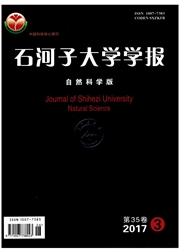

 中文摘要:
中文摘要:
为了建立及鉴定结核分枝杆菌感染小鼠肺泡巨噬细胞诱导结核分枝杆菌小分子热休克蛋白HSP16.3分泌表达的模型。采用将0.3mL浓度约为1.0×107个/mL结核分枝杆菌菌悬液经昆明小鼠尾静脉注射,复制结核分枝杆菌感染小鼠模型,经鉴定小鼠感染模型复制成功后第15天,进行小鼠肺泡的灌洗,收集小鼠肺泡灌洗液,获取感染小鼠肺泡巨噬细胞,以提取的感染小鼠肺泡巨噬细胞内的结核分枝杆菌基因组DNA为模版PCR扩增结核分枝杆菌小分子热休克蛋白HSP16.3的基因,同时进一步利用激光共聚焦显微镜观察小鼠肺泡巨噬细胞的方法进行研究。PCR结果证实感染结核分支杆菌的巨噬细胞内有结核分枝杆菌小分子热休克蛋白Hsp16.3的基因表达;同时激光共聚焦显微镜下可见感染小鼠肺泡巨噬细胞内吞噬有大量结核分枝杆菌,并且证实有结核分枝杆菌小分子热休克蛋白Hsp16.3的分泌表达。成功建立了结核分枝杆菌感染小鼠肺泡巨噬细胞诱导结核分枝杆菌小分子热休克蛋白HSP16.3分泌表达的模型。
 英文摘要:
英文摘要:
To establish and identify the expression model of Mycobacterium tuberculosis HSP16.3 induced by MTB-infected alveolar macrophages in mice. The study used 0.3 mL M. tuberculosis suspension at a concentration of 1.0 × 10^7 pieces/mL to inject the mice through tail vein to replicate models of mice infected with M. tuberculosis. 15d after the successful replication of the model, we lavaged the alveolar of inice and collected the lavaged liquid to obtain alveolar macrophages of the infected mice. The gene coding for Hsp16.3 was amplified through PCR from the DNA of M. tuberculosis in the alveolar macrophages of infected mice,and con-focal laser scanning microscopy, CLSM, was used for the observation of alveolar macrophages. The results of PCR confirmed the expression of the M. tuberculosis Hspl 6.3 in alveolar macrophages, and CLMS found a large number of M. tuberculosis within alveolar macrophages of the infected mice and proved the expression of M. tuberculosis Hsp16.3. This study succeeded in establishing the expression model of M. tuberculosis Hspl6.3 induced by MTB-infected alveolar macrophages in mice.
 同期刊论文项目
同期刊论文项目
 同项目期刊论文
同项目期刊论文
 期刊信息
期刊信息
